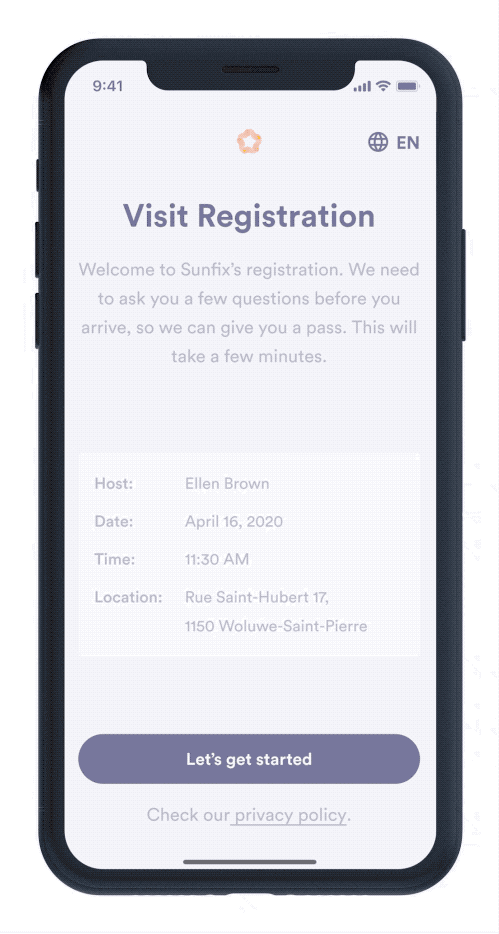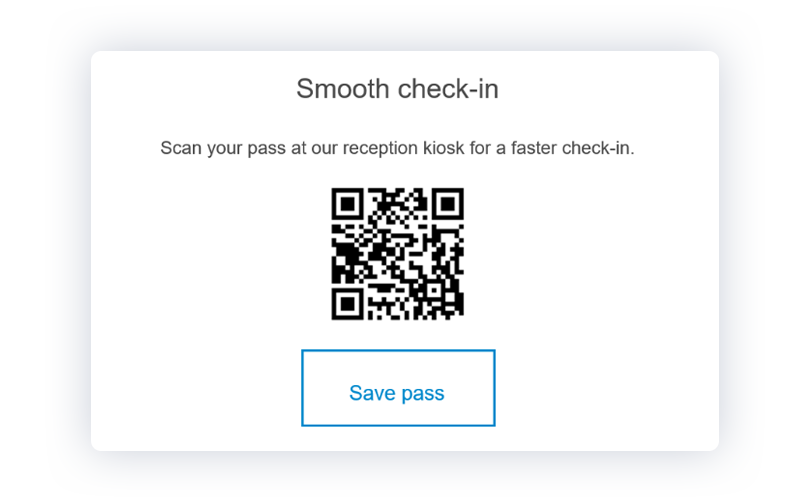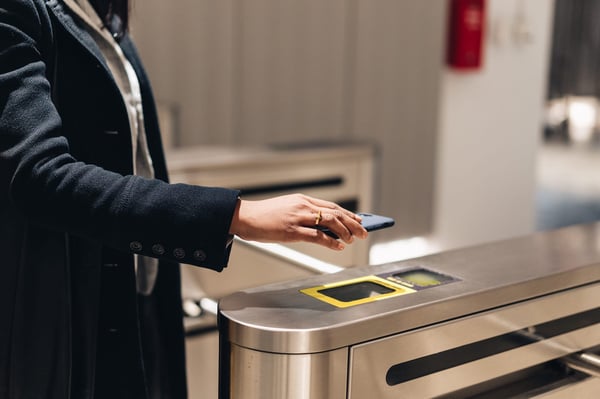7 big CRE tech trends to arise in 2020

The COVID-19 pandemic has caused significant structural and organizational changes throughout every possible industry - and Commercial Real Estate (CRE) Tech, sometimes called PropTech, is no exception.
While some of CRE tech trends to emerge this year may only be temporary stop-gaps to facilitate “business as usual” during the pandemic, others may outlast the pandemic altogether.
What is CRE Tech, and how is visitor management related?
The current era in CRE technology, sometimes called “PropTech 2.0,” has seen new tools that have interoperable hardware and software and allow seamless integration between smart solutions.
These include sharing economy platforms, property management software, virtual tours, and 3D printing, and project management software platforms.
Cloud-based visitor management systems (VMS) are a key component of the new CRE Tech landscape. The right VMS streamlines visitor experience in commercial spaces by improving physical building security.
This can be achieved by integrating with third-party solutions and streamlining ID checks, emergency notifications, access control systems (enabling guests to access only needed parts of the building during visits), host notifications, parking management, data reporting, and more.
All of this is incredibly important in facilitating broad safety changes during the COVID-19 pandemic.
How these 7 CRE tech trends are transforming visitor access in 2020
I recently discussed changes to visitor management in GENEA’s recent webinar on building access in a post-COVID-19 era. Here are some of the main takeaways, based on the solutions Proxyclick is implementing with our clients:
1. Everyone entering a building is now a visitor.
This includes not only clients, but also janitors, maintenance personnel, cleaning crews, delivery truck drivers, and employees from other sites of the same business.
The need to keep accurate records of who is coming and going has never been more crucial.
Leaving aside basic security concerns, maintaining the safety of employees who cannot do their respective jobs from home (and thus must go to the office, risking COVID-19 contact) must be the top priority.
In addition, rapid and expedient contact tracing must be facilitated in case the need should arise. A cloud-based solution such as Proxyclick is ideal in these circumstances. It can be accessed from off-site at any hour and holds accurate identification, contact data, and date and time of entry for any and all visitors to a particular worksite.
2. Visitor sign-in is going touch-free.
Touchless CRE tech is the new normal. Entry into common spaces in many modern, digitally connected buildings had long ago foregone paper logbooks.
But many still rely on a system wherein visitors pass over an ID, receive a visitor badge, touch door handles, and speak to a friendly front desk attendant. Some modern buildings have thumb-scan entries.
Due to COVID-19, all of these types of check-in processes will be relics of the past. And even more modern approaches - such as the front desk kiosk at which visitors would sign in through a shared tablet - may be used differently (or in some cases, removed) if a company’s business continuity plan (BCP) involves eliminating touching of all shared surfaces.
(Proxyclick's Touchless Check-In, for one, allows individuals to scan QR codes at these tablet kiosks without tapping the screen.)
In addition, front desk attendants may now be welcoming visitors from behind plexiglass. Voice prints and optical recognition may become more common.
3. Pre-registration means no more surprise guests and e-safety checks.
Although prior to COVID, we heard on numerous occasions that there was a real struggle to get tenants to pre-register their visitors, now it has become truly mandatory.
In Proxyclick, each tenant in a building maintains their own account, and each employee only sees their own visitors. Before their arrival, visitors receive an invitation email on their personal smartphones with a link to check in, as part of our remote registration process.
Within this email, visitors can be shown relevant information (including images and videos) about COVID-19 safety protocols. These are tailored to the location in which the visitor is checking in, as different governments have different regulations concerning social distancing, PPD, and what constitutes essential personnel.

This step also provides a crucial safety check. Remote registration links can lead to questionnaires that assess the health of the recipients before they arrive on the premises. Depending on the rules that admins set, a visitor may be barred from entry based on his or her responses to those questions.
During all of this interaction with the visitor, the host is kept informed via notifications and can prepare accordingly.
4. The QR code is king.
Providing visitor’s unique QR code facilitates better security and COVID-19 safety simultaneously.
If visitors pass remote registration requirements, they can receive a QR code via email which will become “active” a certain amount of time before a scheduled meeting.
Upon arrival at the facility, the visitor can scan his or her smartphone with the QR code at turnstiles, doorways, or other access control entry points to enter the premises. Think: TSA pre-check at every meeting you attend (but actually making your flight on time).

Using an open API integration with one of Proxyclick's many access control partners, that QR code can also trigger destination dispatch. That is, in a multi-elevator building, the visitor is directed to the correct elevator bank to deliver him or her to the scheduled meeting.

In addition, at the moment when the visitor scans the QR code on the turnstile, the host is notified via text message, email, and/or another notification method like Slack that the visitor is on the way up.
5. Access control is the way forward.
Changes in access control are important safety considerations.
A safe environment isn’t only dependent on automated doors, optical turnstiles, and touchless elevators - it can be facilitated by designated security or lobby ambassadors in PPE assisting with pushing elevator buttons in the lobby or reception area.

Visitors’ temperatures can be checked with infrared thermometers upon arrival, barring entry to those showing a fever.
Common spaces like gyms, cafés, and conference rooms may be closed until further notice, and space needs to be created for safe queuing. If necessary, that means extending building hours so that visitors may stagger meeting start-times and limit proximity.
Some CRE tech trends will enable visitors to avoid entering buildings altogether
6. We'll see more “virtual visitors” and distance teamwork.
As fewer people enter commercial buildings, virtual tours and 3D modeling (like the ones Photofing and ICON provide) will become far more common means for potential buyers and lessees to scope out CRE sites from a distance, even from the safety of their own home offices.
Some stages of project management as a whole may also go online, with construction documentation and defect management happening on integrated software (like the platform PlanRadar provides), and property management tools such as Building Engines and PropertyWare being used exclusively from offsite.
7. The temporary downturn in co-working will continue.
In the current climate, health guidelines indicate that it may not be ideal to enter a building with multiple unknown co-workers to hang out for hours on end.
However, we expect the sharing economy facilitated by Convene and other flex spaces to resume once the pandemic is under control, due to its strength as a source of innovation, inspiration, and community for solo entrepreneurs.
Since many companies are allowing their employees to work from home indefinitely, these types of spaces will end up being a welcome reprieve for some as they simply need to get out of the house.
Where visitor access CRE tech is headed
Before we were talking about the COVID-19 pandemic, cloud-based visitor management solutions had already upped the ante in the property management sphere in a significant way.
Best-of-breed systems allow for connectivity between other SaaS systems, and are scalable (locally, nationally, and globally), environmentally sustainable, and cost-effective. Remote management of systems like Proxyclick help enforce procedures for access management across many buildings simultaneously.
Today, cloud-based CRE Tech like visitor management systems are indispensable in implementing health and safety procedures following COVID-19. Automated, touchless check-in solutions screen individuals before they arrive on-site, and ultimately help prevent the spread of a virus in the workplace.
These features along with the underlying flexibility, customizability, and agility of cloud-based visitor management solutions, will help carry these businesses forward, even in an uncertain future.
To learn more about our latest touch-free check-in features, book a demo here.


